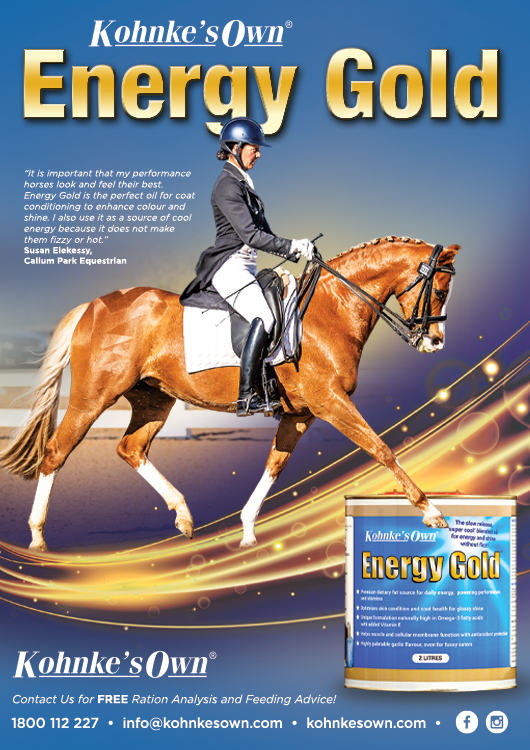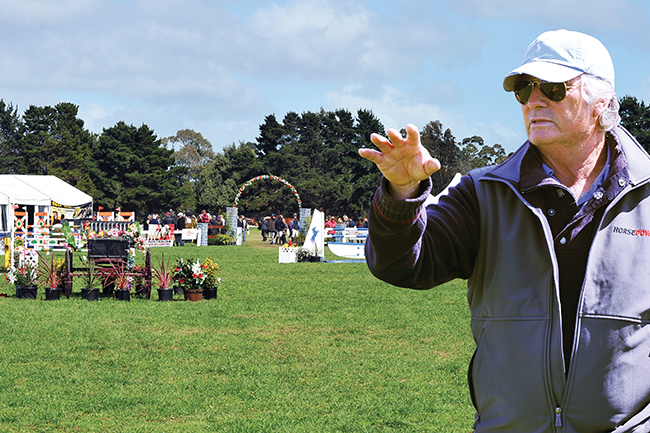 Words and photos by Rebecca Ashton
Words and photos by Rebecca Ashton
George Sanna has spent a lifetime riding jumping horses, training jumping horses, and training riders, but he still believes that real success comes from getting out of the training arena at home, and facing up to the challenge of real courses at real competitions – but that means learning how to walk a course… Rebecca Ashton was there to record George’s advice:
The first thing about walking the course is make sure you’re there early. Give yourself time and don’t be in a hurry. The moment the course is open, you’re the first one in there. But it doesn’t start there, make sure you know if you’re in the first few to go, and they’re going to start the class immediately after the course walk has finished, you’ve got to make sure you’re in and out, you’ve done a good job of walking it, and you’ve got time to get on your horse who, if you’re in the first half dozen or so, you’ve probably already given a bit of work, and maybe even popped him over a jump or two so he’s really ready. If you’re first out, there may well be a lot of time pressure, so make sure you’ve thought of those things.
Story continues below the advertisement
It’s always a good idea to look at the course plan and get an idea of the jump off as well, or if the course builder’s out there, you can ask him, because you’re not allowed to come back in and walk the course for the jump off. Sometimes you’ll jump a fence from a different approach or he will have a line that wasn’t in the first course. That’s just good preparation. Obviously also know what kind of class it is, whether it’s a one rounder, an accumulator, two phase or a speed class, so know your class and know what you’re walking.
You’ve got to go in with a plan of how you’re going to ride that class. Are you going to try and win it? Are you going to try and go fast? Are you just trying to jump clear and within time? Because you’re going to walk it differently depending on what you want to achieve, and you’ll have a different mindset. If you’re going to go fast, you might see a very short six and decide to ride five. Some riders are in there to win, or some riders are just stepping up to that level, so will walk it totally differently with a totally different mindset.
When you walk into the arena, the first thing you do is just get a feel for where the entry/exit gate is, just looking at the whole course, where the spooky things are on the periphery of the ring, where you might want to take your horse when you first come in and are waiting for the bell to ring, where you’re going to go and familiarise him. Are you going to show him a spooky jump? Are you going to show him a spooky corner of the ring? If there’s a narrow gap between the fence and the edge of the ring that you’ve got to go around on the way to the next jump and he might just squirm a little bit, then you might want to ride him through there. That sort of thing. Common sense stuff.
Story continues below the advertisement
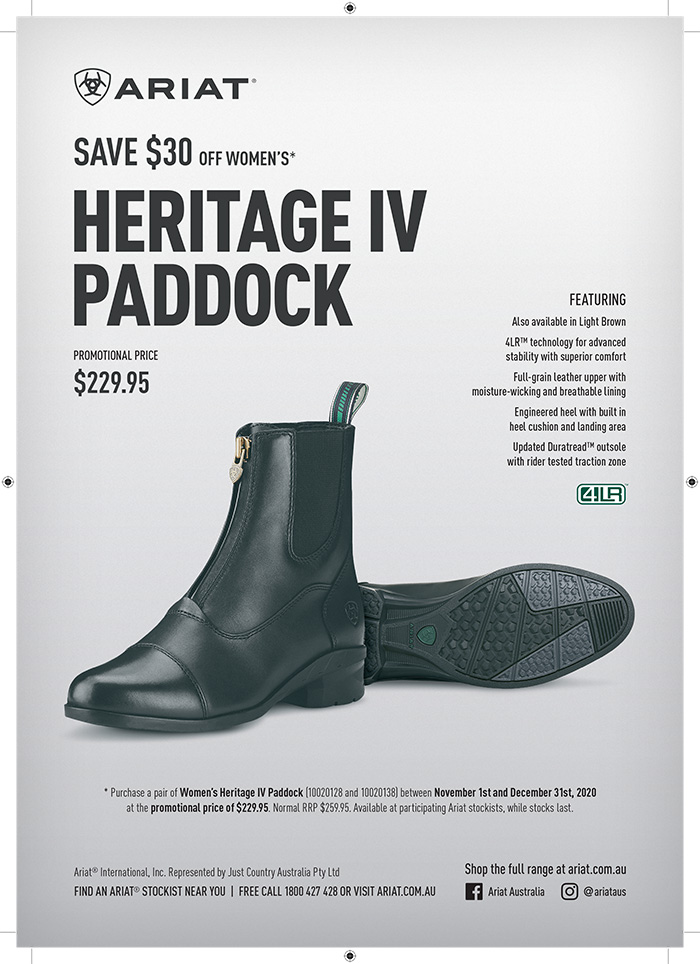
Get a feel for the slope of the ring, the surface, the ground. You need to have already had a bit of a look at the going to see what studs you’re going to put in.
Once you’ve had a look around, you walk to the first fence and consider quite carefully, as part of your course walk, the way around to the first jump. You see so many times, especially indoors, when things are a little tight and options are a bit limited, people go to the first jump and they want to come off the right rein and they suddenly realise that they can’t get through around onto the jump off the right rein, so then they have to stop and change plan, change direction and come at it off the left rein. Less experienced riders are immediately deflated because they’re thinking, ‘If I didn’t think about that, what else did I not think about?’. 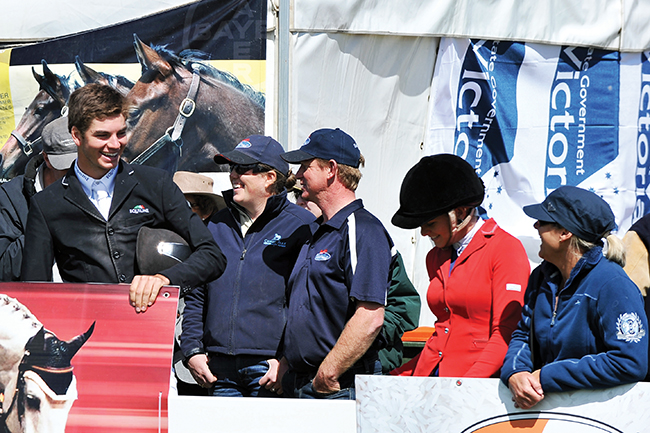
Make sure you’re there early
So, you want to have a clear plan. How you get to the first jump is part of that plan. It makes a difference if the first jump is going towards home or away. Horses are naturally more drawn to home, the marshalling yard and practice jump, where you come into the ring. They tend to be a little stickier, less forward, green horses especially, if they’re going away from home, particularly if they’re heading up to a spooky corner of the ring. Irrespective of what kind of jump it is, you need to think about whether it’s better to be positive, or if you can canter to it softly. That also depends on your horse. Some horses are shy of the first, and you need to ride to it more positively, some are hot and bold, and you can probably give it a soft ride.
Story continues below the advertisement

If there’s a related distance to the second jump, immediately you’ve got to be thinking it will probably ride a little longer because of that slight desire of most horses to be behind the leg at the start of the course. If it’s towards home, it will be less likely to be longer than it walks. Later in the course when they’ve opened up a bit, they’ll probably start to stride a little longer. I would say there is a metre’s difference between a line early in a course, to later in a course, and the slope of the ground also has to be considered. All of these things you’ve got to factor in and not be surprised. When you walk a distance, it’s not just the mathematics when you step it out that determines how it’s going to ride.
You’ve also got to be aware of the time allowed. The height of the fences makes a big difference, for example 1.50 metre track can’t be built at 1.60 metres just because there are a lot of good horses in it, so in modern showjumping, because the horses and riders have become so good, one of the things that creates faults is the time allowed. You don’t have time to set up for a fence, you don’t have time to get straight. That time pressure in a big class would probably create 60% of the faults. If the time allowed was ten seconds longer, I think there would be many more clear rounds.
If you’re in a training round, riding horses at 90cm, it probably isn’t a big deal, but once you’re in the higher level competitions, you’re there to be competitive. But even so, if you look at the first day of a 5-star or a major show like Aachen, you’ll find that the first day there’ll be a lot of time faults because people are not so worried about the time, they’re just giving their horses a nice round building up for the Grand Prix. But if you’re out there training and you’re not worried about the time, then you’re going to be landing and balancing and making your horse go around the corners because that’s how all horses have to start. They have to learn to follow the track and land, balance, change, create a new canter and continue forward. That process on the landing side of a jump is very, very important when you’re training and that’s going to be your mantra. As the horse progresses, it then becomes more automatic. You can create more forward, land and he’ll virtually balance himself because that’s all he’s known for the first two years of his life.
If it’s that sort of class where time is a factor and you absolutely don’t want to be getting time faults, you need to be walking the course looking for opportunities to shave a bit of distance off the track and land and keep moving and keep things fairly tight.
Story continues below the advertisement
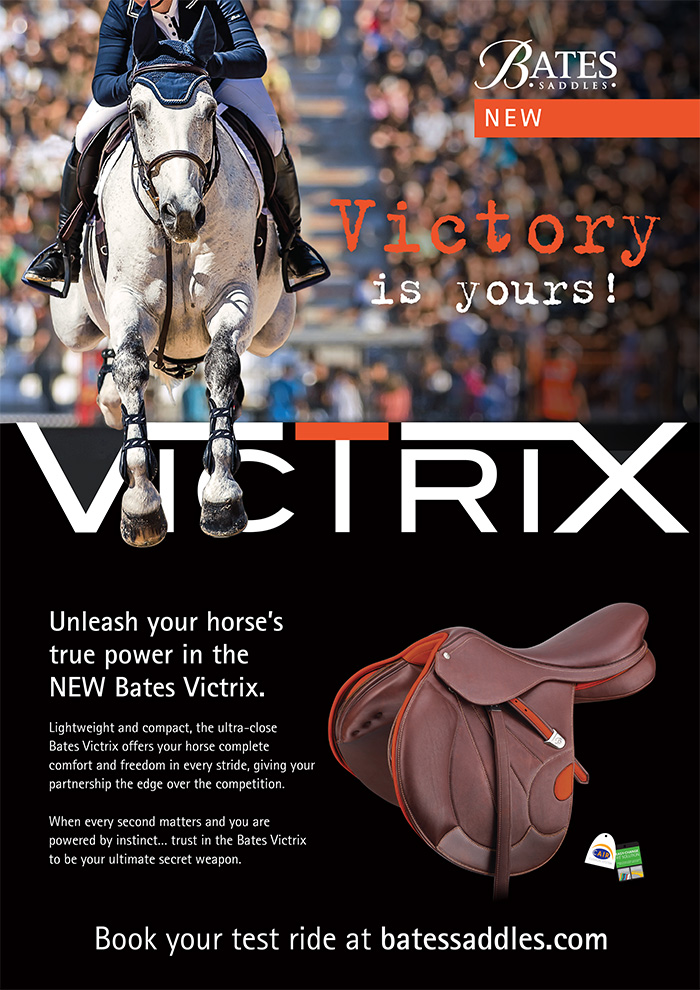
You’ve got to have a complete plan, which is rather like a dressage test in many ways. You’re considering how you’re going to jump every jump, if it’s off a turn, how wide you’re going to go to that jump given time pressures. It’s got to be a very, very detailed plan about how you’re going to tackle each jump, how your horse is going to react to that jump, how you’re going to need to ride that jump in relation to the distance after it.
When you’re riding a track, what you’re basically doing is riding a line on the ground with speed bumps on the way, which are the jumps. So your first priority is to ride a good line that presents you straight to the jumps, continue straight and have well constructed geometrically smooth turns and lines that bring you to the next jump so the horse is able to maintain rhythm, not a jagged, sharp spin.
So when you’re looking at how to get from fence to fence, the smoothness of the turn is important, so you don’t sort of turn away from a jump and spin back for the next. You want to create a nice smooth track because that enables you to create rhythm. If your line is suddenly broken and the horse has to quicken his pace to maintain his balance and the rhythm changes, then your distance changes. Even if you’re riding against the clock or within the time allowed, just riding lines that have an even curve in them, even if they’re very tight, is really critical. That’s what creates rhythm and distance. You want to be able to maintain something like 350-400 metres/ minute to stay within the time allowed, and you try to maintain a fairly even pace. However, different jumps require different pace just because of their construction.
Looking for a top showjumping stallion? Top European bloodlines? Consider Chaccoon Blue – for more information, and a range of other top stallions, go to: www.ihb.com.au
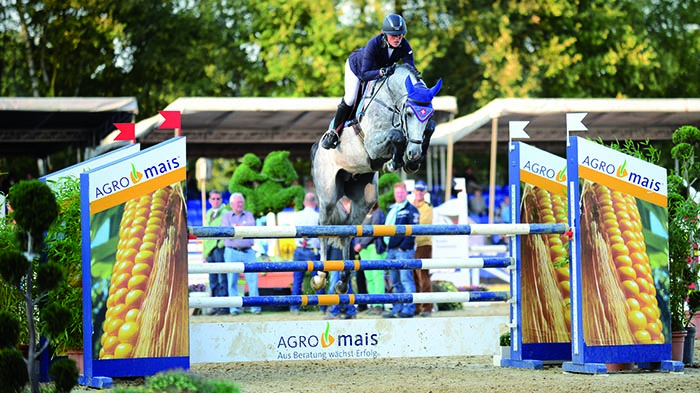
Something like a triple bar or, an extension of that, open water, will require a more forward gallop than say a stile or a narrow, delicate jump that’s very tall. If he’s cantering big and open and forward, then he’s going to jump the fence longer and flatter. If he’s more on his hocks and collected, then he’s going to jump a fence that’s more sharp and steep. Given that, you can’t be over cautious at every jump. When you come to a fence, you have to look at the construction and the spookiness of it, the visual impact may also have a bearing on how you want to ride it. If I’ve got a 1.40 metre vertical that just consists of three or four rails and my horse is a good jumper, then that is a very easy fence to ride. If I put a liverpool underneath it, it’s still a 1.40 metre vertical and the liverpool doesn’t really affect the jump itself, but the visual impact of that jump, especially if my horse is a little water shy, means that I’ll have to ride with more connection, more leg and be more positive.
The visual impact isn’t always the jump itself. It can be the background, for instance if you’re jumping toward a marquee on the side of the arena, it might attract the horse’s attention. The way you ride individual jumps will be dictated by the construction of the jump, the size of the jump to some extent, the visual impact of the jump and also where that jump is in relation to other jumps. For example, if I have an obstacle that leads into a line that has a very long four or five strides after it, no matter how I’m intending to jump that fence, I have to have it in the back of my mind that I’ll need to jump it a little more forward than normal, because I’ve got a very long four strides after it. If I just ride to it and pop over it, suddenly my four strides becomes four and a half, and it gets really ugly and then you’re chasing and you’ll probably have the next one down. And the reverse applies as well. If I have an extremely short distance, then I want to be coming into the first jump a little collected.
The clever course builder in that situation will have something that is hard to jump unless you’re going forward, but a very short distance after it. These are the subtleties they will use. If you’re jumping in the lower levels, theoretically with good course building you shouldn’t have those decisions. It should be fairly simple and flowing. But when you get to the 1.30m to 1.40m mark, it should start getting more challenging, and you have to start to adjust, but the reality is sadly, at the most basic levels when you get less capable course builders, they inadvertently build things that are really, really difficult to jump, simply because they have no understanding, so they inadvertently build really complex tracks or really difficult corners and lines. It’s not deliberate but just through ignorance.
There’s lots of things that happen on course that can bring you undone and they’re not necessarily part of your course walk or plan. If you have a plan that you’re going to jump the first and there’s a nice three to four strides to the second jump and you say ok it’s a nice distance, I’m just going to come nicely into the first, take the three or four strides and jump out. As it turns out, your horse spots something, or you’re not so experienced and you don’t spot your distance until late, and when you do it’s crazy long, so you kick and boot and chase them into number two then all of a sudden your four strides has become three and a half. Then you’ve got to be quick and get him back straight away or else you’ll get to the next jump in three and a half and belt it. That’s not part of your course plan. That’s part of your general understanding and making things work.
Sometimes you’re in two minds and there’s a distance like a really, really long seven or a steady eight. You can’t make up your mind so you might think, I’m going to get him really forward over that first jump and I’m going to get the seven. Let’s just say it just doesn’t happen; it’s really backward into the first, then you may in that situation change your mind. Sometimes you just have to think quickly, but normally you’re going to try and make your plan work.
Story continues below the advertisement
As you’re walking around the course, you’ll continue evaluating each jump. I always encourage my students not to cut across. Let’s say you have to go around a jump to get from one to the next and it doesn’t look that awkward, an experienced rider might just walk across, but I encourage my riders to walk the line so that when they come around to the fence the way they’re going to jump, they get a clear visual concept of what it’s going to look like when they ride. Sometime it doesn’t look quite how they think it will. So, don’t be lazy and walk around! Be thorough and diligent.
You’ve also got to understand that most horses get adrenalised and stronger as the course goes on so the lines are going to tighten, especially if there’s been a line or two that’s quite forward and you’ve opened the horse’s stride up. So for example, if there’s an obvious very forward six and you’ve got to come around a corner afterwards and take a very short four stride line, then if you land from your very forward six and continue with that canter onto your four stride line, it’s not going to be the right canter. The moment that you land from a jump, you’ve got to be thinking, what’s my next jump and how was I planning to jump it and adjust your canter to that plan. So when you enter that turn that leads you to that fence, you’ve already got the canter you need so you’re not both trying to adjust the canter and find your distance all at once, which is quite complicated for people who are not professional riders. Don’t give yourself too much to do in front of the jump.
When there’s open water, you’ve got to get your canter up to 450 metres/ minute and most horses are shy of open water. So you land running and that sort of distorts the line. You always have to keep the concept in your mind that at all points on course, even the last jump, you have the same canter you had when you went through the starting flags. Everyone knows that feeling as the course goes on and things start to get a bit hairy and you’re riding by the seat of your pants. Less experienced riders are very aware of that! At all stages you’re looking at managing your horse’s pace and adrenaline levels as the course goes on.
Coming towards the exit gate at the end of a course is a very well used course builder’s way of getting faults. Late in the course they’ll have a line that’s maybe a little steady going straight to the gate with a delicate vertical maybe placed after the water. So you’ve always got to think of the context. That’s a really big part of managing your lines. 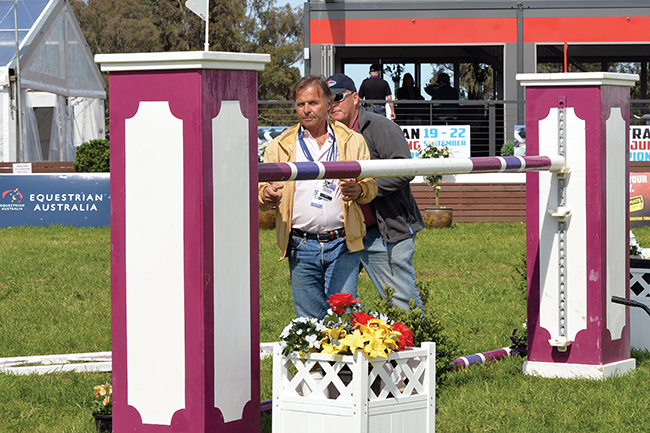
Once you’ve walked the course, then the trick is to remember it! What I do when I walk with students, when we get to the last jump, we go through the whole thing again. Start from the beginning with a very detailed plan. For example, we’re going to come in and we’re going to canter up to the judge’s box because that’s right on the edge of the ring near that particular fence and the horse might be distracted and then there’s that funny looking liverpool so we’re going to canter over there next, and stand the horse in font of that and give him a pat, and then we’re going to pick up the left canter and come around 6B and approach the first jump. Then get moving because you’ve got quite a long canter to the second fence and you don’t want time faults so don’t waste your time, but don’t jump the second too big because then we’ve got a quiet four to three then come around the corner which we’re going to do by coming inside that jump because it’s not a risky turn and we don’t want time faults by going too wide. Then that jump’s a bit short and then there’s a related six stride down to the next fence. Then when you jump that fence and jump quite forward, sit up and get him back because the next line is quite short. That sort of detail. We go through that once or twice. Then basically I leave them to it and I’ll go to the practice jump to warm them up and we’ll go through it again. I think it’s lazy and not as affective to look at the course while you’re going through it in your head. I think it’s really important to look away from it. Some very good riders constantly lose their way. When you look away from it, you have to think more carefully about where everything is.
I think a very important part of your course walk, if you’re not on too early, is to watch the first few horses go and try to get an understanding of how the course is riding. If you’re riding Bozo who’s 18hh and has a 20 foot stride, watching a pony isn’t going to be terribly informative. You’ve got to try and get an idea from a horse that’s similar to yours. Even if you’re really experienced sometimes things don’t ride quite how you would expect. You might have to adjust your plan a little bit. Related lines to combinations are in my mind the most difficult part of any course because there’s lots of ways to get it wrong and then if it’s into a double, it’s pretty unforgiving when you get there. If it’s a single fence, they might be able to scramble over it, but they can’t scramble through a double.
With a related line on a curve, there are more variables. The variables are how you jump in, and the pace and the line you go to the next jump. If it’s a curved line, if your horse jumps to the right he will be a stride shorter, or if he jumps to the left, he might be quite wide, and stride longer and that into a double can be unforgiving.
So you might make a decision on a line when you walk the course. It might be a little forward in the eight, but I think it would be a better eight than a nine, and then you watch five horses in a row go and they do the nine really comfortably and someone tries the eight and it’s really crazy long, then you change to a nine. If you’re out early, you don’t have that luxury. You just have to ride your plan and ride what’s in front of you. But for sure it’s a great advantage to watch a few go.
By the time you go into the ring, you’ve got a good idea about what you’re going to do. That’s not saying you won’t ever do something different; the horse might spook or stumble or he might miss a change and he might get hippity hoppity, but in the end, if your horse is straight and forward and balanced and got good distances, it doesn’t matter how many strides you’ve taken because he can jump the jump, but you do need to have a plan.
Some riders and systems of coaching and training are very very structured. The Americans are very structured because they have a history of hunters and equitation, so they will walk even ten stride lines and have an incredibly detailed plan, whereas a lot of the Europeans, if it’s more than seven strides, they don’t walk it, they just ride off their eye. People like the Whitakers who are amazing riders, and a little bit old school, they’re less structured. They would look at it, land and decide. Whereas the Americans would have it all planned, but they’re just different systems. For me, anything up to eight strides, I walk it, and have a plan. Whether it’s what you do in the end or not. You’d rarely see anyone do anything other than four and four or five, but when you get to the eights and nines you have more flexibility and more time to adjust.
GEORGE COMMENTS:
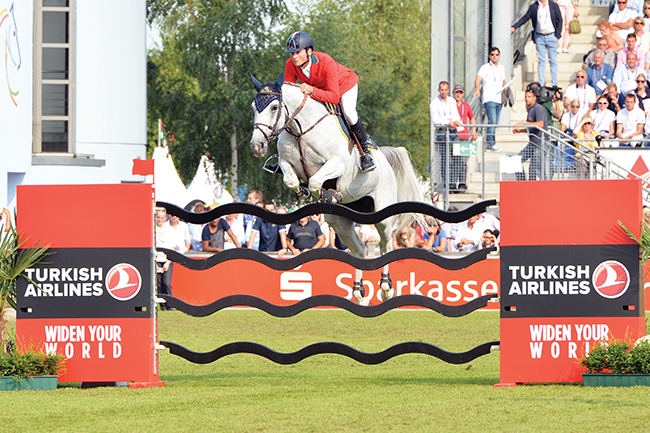 Black wavy planks. It’s probably on flat cups as well. That’s extremely easy to have down. Normally you would probably point into a little dip. This guy is jumping it pretty much in the centre, but he’s jumping it well. A fence like that is delicate and you can’t afford to touch it, so it’s less forgiving with a lack of balance or not such a good distance. You need a canter that’s very much on the hock, an accurate canter that’s not crazy deep and doesn’t pressure the horse’s front end too much. It’s fairly unforgiving if your balance and distance is not good.
Black wavy planks. It’s probably on flat cups as well. That’s extremely easy to have down. Normally you would probably point into a little dip. This guy is jumping it pretty much in the centre, but he’s jumping it well. A fence like that is delicate and you can’t afford to touch it, so it’s less forgiving with a lack of balance or not such a good distance. You need a canter that’s very much on the hock, an accurate canter that’s not crazy deep and doesn’t pressure the horse’s front end too much. It’s fairly unforgiving if your balance and distance is not good.
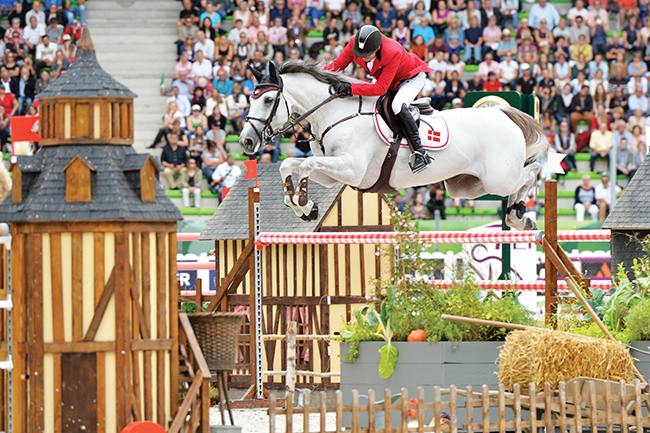
Horizontal painted rails like that you don’t see very often. Horses don’t read those rails very well. Their depth perception is not as good with those rails as with the vertical stripes. It’s a very clever jump because it’s hard to read due to the horizontal stripes, it’s very empty. There’s not a lot of substance in the fence at all but there’s a lot of stuff around the jump. It’s a very cleverly constructed jump. At the higher levels, that’s how course builders get faults because they can all jump 1.55 oxers and 1.60 verticals but it’s those little subtleties that get faults. There’s a lot of stuff for the horse to be distracted by. So, you’ve got to be well balanced, got to have good distance. It’s not forgiving.
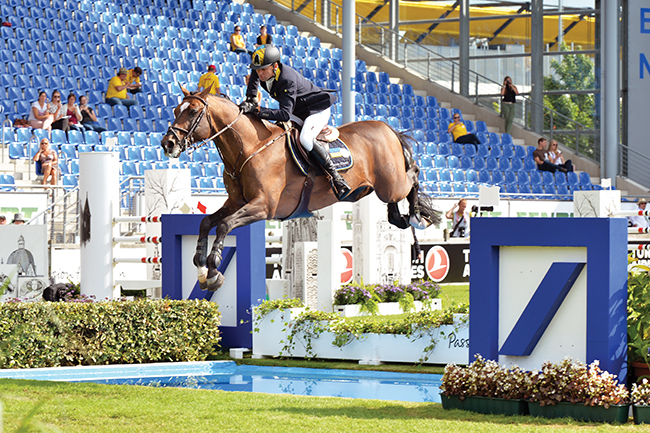
The open water is always a challenge. Some horses are massively scared of open water and they don’t want to jump it. Some horses have a life long issue with it. Stallions are notoriously difficult with it. I think with stallions, once they decide they’re not going to do something, it’s a bit hard to make them. It’s not really a reflection of what sort of jumper they are, careful or careless. You want them a little scared so they don’t just run right through it. If you’ve got a horse like that, you’ll never win a major championships. So, first you have to get them confident to jump it and then you have to keep them respectful so they want to jump over it.
A wide water jump would be 4.5 metres, but the truth is, if a horse can jump an oxer that is 1.5 metres wide, it would jump that distance. But the horse has to want to get the height and want to get to the other side and not hesitate. If they hesitate, they land in it, if they’re blase, they land in it, if they’re scared they don’t jump it. You need a lot of pace, you need to get right up to the line. It’s an easy jump to jump when the horse is a good water jumper and there’s a lot of pressure on horses that are not. Normally what comes after the jump is more the issue because you open the horse up, you get him galloping and his stride gets long and forward and then they’ll often have a tall vertical or a combination so the water causes the faults later in the course. At this level though it’s pretty likely the horses can jump the water well.
It’s unlikely that the water will be the final fence but if you go to training shows and I saw it at a Bundeschampionate qualifier recently, they had a very friendly little water jump, even for the four year olds, as the last jump, just to train them to jump the water so you can just run at it and not be worried about getting them back afterwards. But later on up the levels, it’s more there to create problems further into the course.
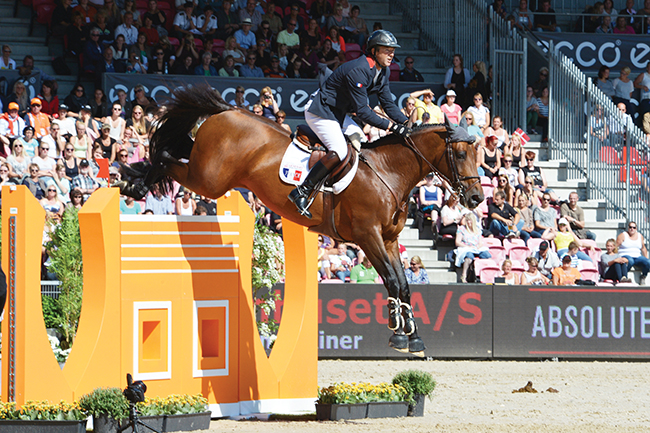
While it’s a narrowish jump, it’s got a lot of substance to it so the horse will read it better and will help you more with backing up. It’s also quite delicate. Those little blocks on the top of the wall, if you touch them, they come down.
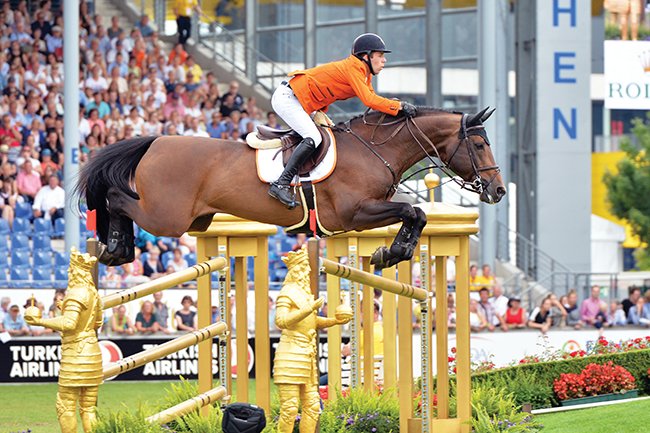
Swedish oxer. The main issue with these fences is straightness. If you jump them even very slightly on the high side of centre, then the front of it becomes higher than the back of it and the horses just belt them. At the practice jump, you’re not allowed to build these jumps because it’s too easy to school your horses over them and catch them out. If you jumped that on the left hand side, even a careful horse could very likely misread it because the front’s higher than the back and you’re not allowed to build jumps where the front is higher than the back because it’s so hard for the horse to read. If you ride this one right side of centre, then it’s a rising fence and if you jump it in the middle it’s dead even. But if you have a horse that determinedly wants to hang to the left, he’s going to knock this fence down. These jumps cause quite a lot of faults if they’re built the awkward way for your horse. And the reality is that most horses are rightward or leftward. This guy’s jumping it in exactly the right spot. If you slide to the high side, it will really punch you.
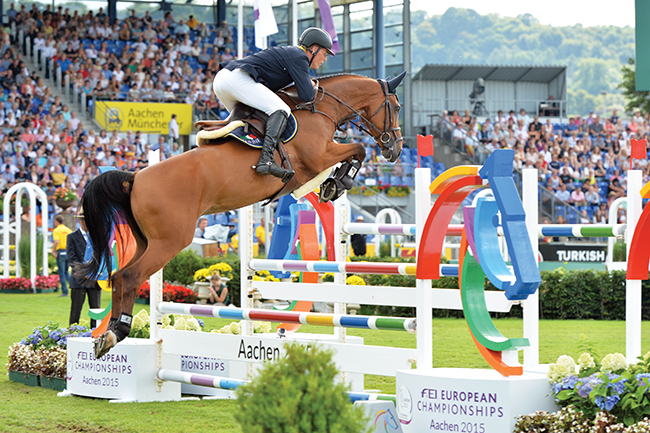
This is a stock standard triple bar. They can be narrower and deeper. This one is a wider, flatter one. You need a little bit more pace. This horse is jumping it really beautifully I’ve got to say. Triple bars are normally fairly easy fences to jump in that all you’ve go to do is ride them up to the front of it and the jump is the same shape as the first part of the horse’s parabola. You don’t really have to worry about keeping him away form the front rail. You just have to get him up to the jump with a little bit of pace and the momentum will get him over the back. But because they are relatively easy fences to jump, course builders will put them in tricky places, like off a short turn away from the gate or into a line that’s quite short so that when you pick up your gallop then they’ve got to come back quickly, a little bit similar to an open water. I can’t see the number on the jump but I wouldn’t be surprised if this jump was into a combination. They also tend to make them big, maximum size.
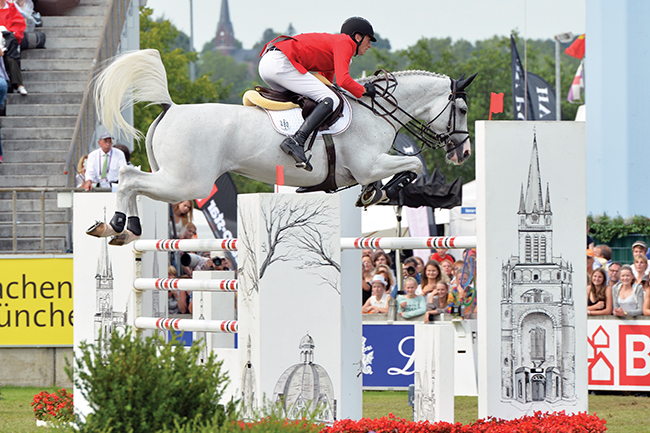
This is a very inviting jump. It’s got a nice solid base. The fence itself has little red bands on it which help with the depth perception but it is going straight into the crowd. Less experienced horses might hang back as a result or maybe tap the back rail. That’s one of the things when you are walking the course that you want to have in mind. It’s one of the external factors that will affect the way you ride the jumps.
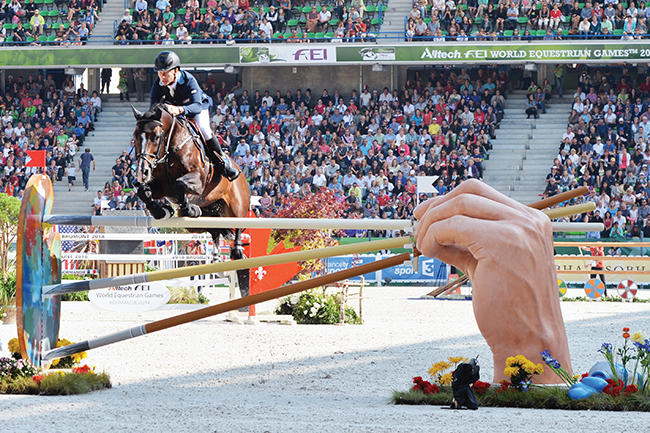
When a horse gets to this level, he’s not going to be often very distracted by the look of a jump but I think in this particular case…..! That is something! It is very empty, there’s no ground line. You can see he’s jumping it right of centre where there is more substance to it. You’ve got the three poles and you have that little wing there that helps you with depth perception and I wouldn’t want to be jumping up near that hand! That’s what modern showjumping at the highest level is about. They’re jumps that are hard to jump clear. Generally pastel colours are also hard to read rather than strong, broken colours. Look at all the rails on the jumps behind as well. They’re all plain or pastels, not the old style show jumping rails….strong red and white or green and white striped. Most horses at that level have seen a lot, but this jump is pretty out there.
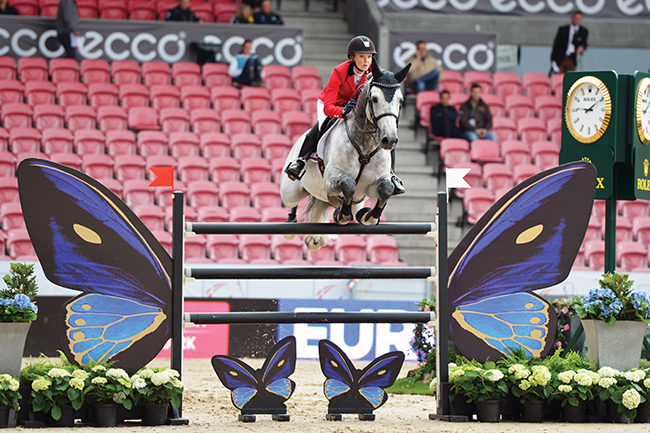
It’s a little bit like the first jump. You have to be super accurate, give them plenty of room. You can’t afford to be too deep with those and the horse has got to be well balanced. You’ve got to have just a little feel of the mouth but not be really pushing forward or hard in the hand. They need a little bit of room. And again, the plain black rail is hard for the horse to read. Dark, unbroken rails are hard for their depth perception.
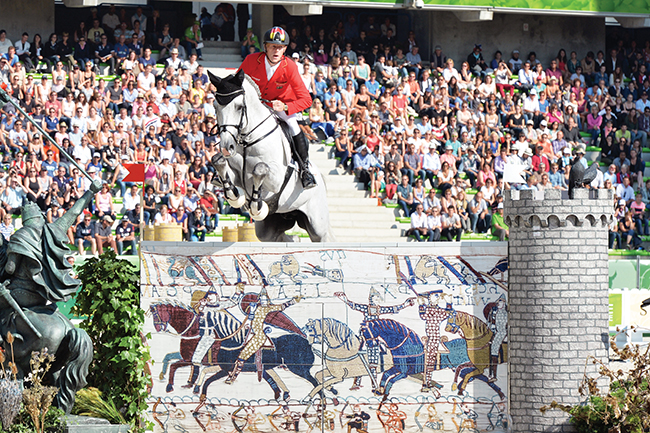
This wall is fairly well framed with the turret but some walls these days are quite narrow without pillars at the side. We have one here that is pyramid shaped, narrow at the top with no surrounds and just two little fags on top. It’s easy to step around and it’s quite imposing. If you took the jump in the photo to Jump Club or Castle Hill Show, the horses would shit themselves and then have it going away from the gate up towards the sideshows, three quarters of the field are going to stop, at the lower levels anyway. But again, at this level, the horses have seen so much. However you always get the odd anomaly where a horse objects to a certain thing that most are fine with. They’re not machines but I think at that level they’d jump that wall very well. In a different context, that jump could cause a lot of grief.
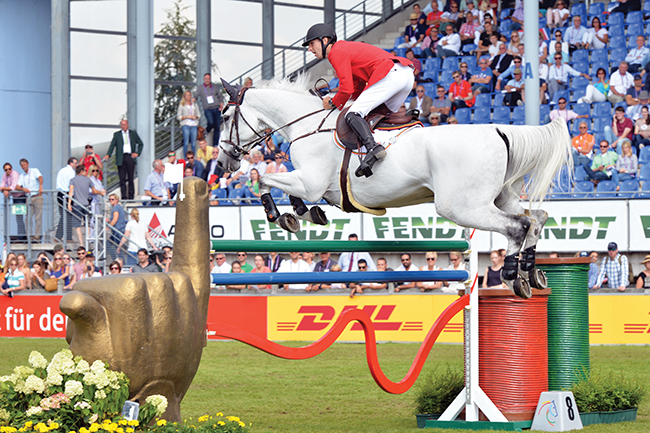
Again, I think that’s a fence horses would jump quite well even though there’s nothing like a ground line. But it’s just got something about it that would make horses look at it and back up a little bit. But again the same thing, plain colours, much, much harder to read.

